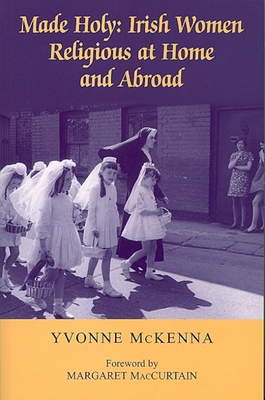Irish Women Religious
Ruaírí Ó Domhnaill reviews Made Holy: Irish Women Religious at home and abroad by Yvonne McKenna, Irish Academic Press, ISBN 978-0-7165-3342-1, €27.50/£20 pbk

THIS WORK is both spellbinding and challenging; its final pages demonstrate extraordinary finesse.
The publishers claim it as "relevant contribution to Irish history, woman's history, Irish sociology, general em/im/migration, [sic] as well as useful to qualitative research methods and oral history" - and it is! Despite the author's dismissal of "high falutin'" scholarly language, her unobtrusive academic methods with one exception, add depth and form to her work.
The choice of subject is inspired; there can be few more significant groups, of which so little is published. The contributors, who worked in England and the (other) "missions", are articulate, assertive and knowledgeable - the perfect interviewees!
The account is organised broadly as a chronology of the sisters' progress, from youth in Ireland where the Oireachtas (legislature) and later the Bunreacht (the Irish constitution) - which, under the influence of Mother Church, discriminated blatantly against women. The injustices went virtually unnoticed, accepted as the norm.
Interviewees were admitted to religious communities, under "pre-Vatican II" conditions. The rigours of convent life and interaction with the secular world were as one might reasonably anticipate; less so the idiosyncrasies of individual religious communities.
The author concludes that "Vatican II represents a challenge to the essence of religious life which was neither easy to accept nor to understand".
Forty years later the laity, though comparatively unaffected, has never fully embraced Vatican II, but nuns' lives were fundamentally, sometimes cruelly, transformed. Contributors' reactions are varied and intriguing.
The nuns' Odysseys end in retirement - for some, in Ireland. Retirement under post-Vatican II conditions was aggravated by undeserved hostility of a hostile, secular society and predaceous news media. Paradoxically, the laity who might have defended religious life tended to disaffected by Vatican II.
Dr McKenna describes Ireland as a "completely independent republic" but enjoins readers to assume that contributors came from "a lower middle class/working-class background". Her text implies that Ireland has an asymmetrical class-structure - middle, lower-middle and working classes. Where are "our" upper-classes? Is class god-like, in that if it does not exist, we have to invent it?
One contributor described the Irish society which she knew as one in which "Everybody was the same"; the author uses it as the heading to Chapter 2. It may be an over-simplification, but it has at least anecdotal support. In Class in Britain, David Cannadine affirms:
"The creation of this egalitarian Irish nation was the most serious disruption to the social order in the British world since the American Revolution…."
Some would rightly see this as compelling praise.
Connolly Association, c/o RMT, Unity House, 39 Chalton Street, London, NW1 1JD
Copyright © 2007 Ruaírí Ó Domhnaill

